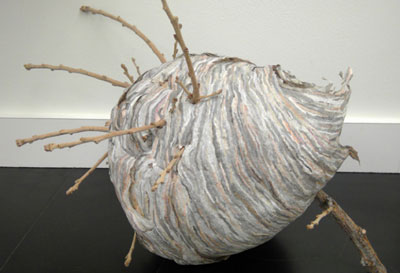Social Wasps in Montana
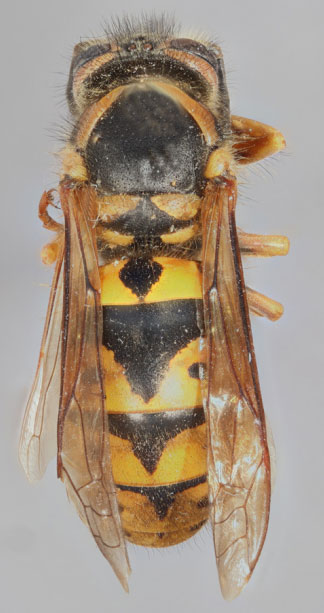
Western yellowjacket. Photo by Laurie Kerzicnik, MSU Extension. Larger image (81K)
We have several social wasps in Montana. Except for the western yellowjacket, social wasps are typically not aggressive unless their nest is disturbed. Most are beneficial and feed on a lot of our garden pests. Our most common wasps are bald-faced hornets, aerial yellowjackets, western yellowjackets, and paper wasps.
They live in colonies, which include workers, queens, and males. They all feed on insects. The western yellowjacket is a scavenger, feeding on garbage, sugary materials, and dead insects. It is the biggest nuisance pest around our backyards and porches in late summer. Although other wasps and bees can sting, most of our stings come from the western yellowjacket. Social wasps make paper-like nests annually in the spring from wood materials. Wasp nests are abandoned in late summer, and only the fertilized females will overwinter; all the workers and males die.
Locating wasp nests in the spring can be challenging. Western yellowjacket nests are often subterranean or can sometimes be in wall voids. Wasps can fly up to 1000 yards (0.91 km), so sometimes the nest can be quite a distance away.
Management
Traps are available for western yellowjackets (available at hardware and garden stores). They don’t trap other common Montana wasps or bees. These traps are most effective when placed out in the spring, when the queens emerge and before the western yellowjacket colonies become large.
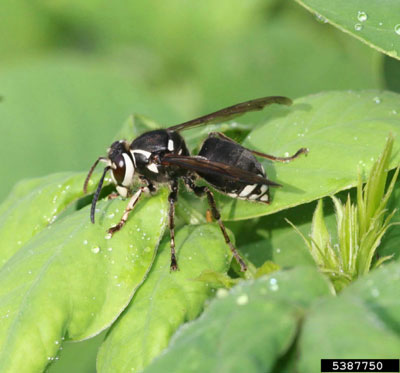
Bald-faced hornet. Photo by J. Dell, Bugwood.org. Larger image (101K)
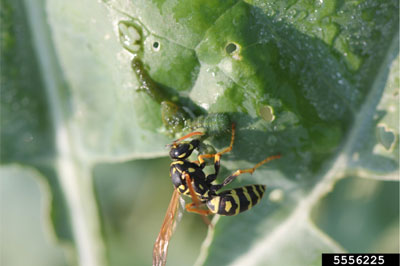
Paper wasp. Photo by W. Cranshaw, Bugwood.org. Larger image (99K)
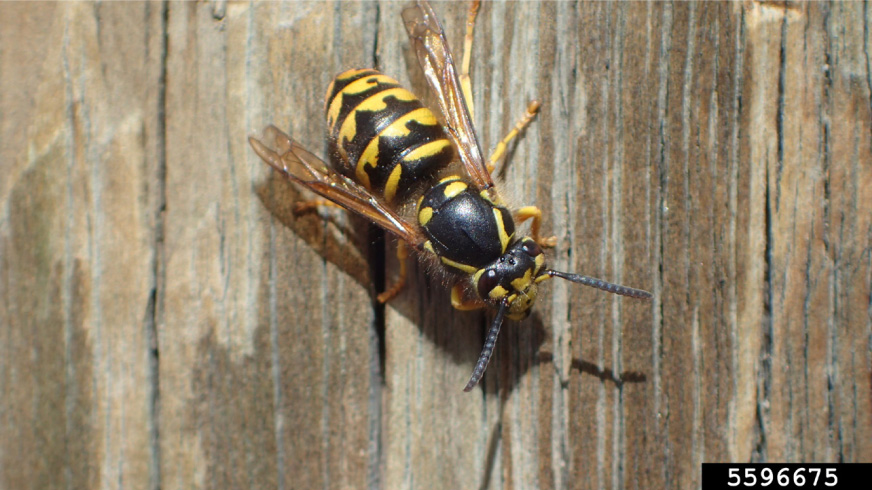
Aerial yellowjacket. Photo by W. Cranshaw, Bugwood.org
Controlling some of the larger nests can be difficult later in the summer. There can be hundreds to thousands of wasps in the colony, and the nest can be the size of a basketball or larger. After a couple of serious frosts and cold weather, the wasps will be dead, and you can knock down the paper nests. The abandoned nests are not used again the following spring and will rapidly decompose during the winter.
Soapy water can be applied to the nests at night and can be effective where nests are exposed and accessible. Exposed and accessible nests may also be enclosed at night with large garbage bags and frozen. Wear protective clothing, such as a bee suit and proper eye protection.
Remove and limit exposure to any attractive food sources around the outside of the home, including garbage cans, pet food, droppings from the grill, and any food or sugar sources. Make sure garbage cans are sealed well. Similarly, make sure that dumpsters are sealed to the best extent possible in recreational areas.
Venom and Stings of Social Wasps
Social wasps use their sting and venom for defense and can sting multiple times. Some of the larger species can inject greater quantities of venom. People vary in their responses to the venom, with most people suffering only pain and swelling. A few, however, may suffer severe allergic reactions.
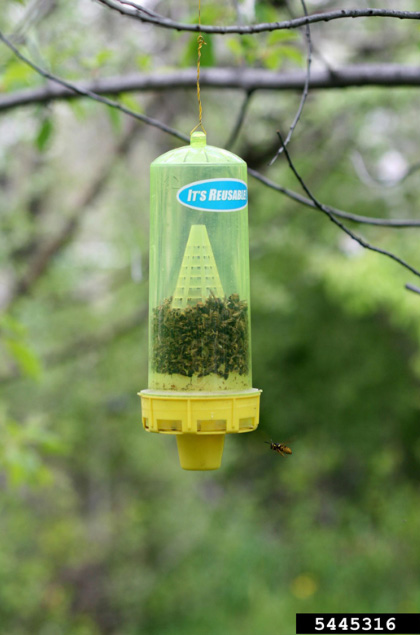
Western yellowjacket trap. Photo by W. Cranshaw
Chemical Control
Active nests can be controlled chemically with a series of wasp sprays. Such active ingredients include permethrin, deltamethrin, tralomethrin, bifenthrin, tetramethrin, and allethrin. If using any of these products, apply them late in the evening, early morning, or on cool, rainy days when the nest is not very active and more members of the nest are present. If controlling a western yellowjacket nest, this might require several applications. Never plug what you think might be a western yellowjacket hole on the outside of the house; this might force them to move further into the house and not have a way to exit.
Further Information
To learn more about the topics discussed on this page, contact the Schutter Diagnostic Lab. If you suspect an infestation on your property, contact your local extension agent, the Schutter Diagnostic Lab at Montana State University, or the Montana Department of Agriculture.
This May 2021 fact sheet is also available as aprintable PDF (1.1MB).
Disclaimer: These recommendations are provided only as a guide. It is always the pesticide applicator’s responsibility, by law, to read and follow all current label directions for the specific pesticide being used. If any information in these recommendations disagrees with the label, the recommendation must be disregarded. No endorsement is intended for products mentioned. The authors and Montana State University assume no liability resulting from the use of these recommendations. The Montana State University Extension Service is an ADA/EO/AA/Veteran’s Preference Employer and Provider of Educational Outreach.

